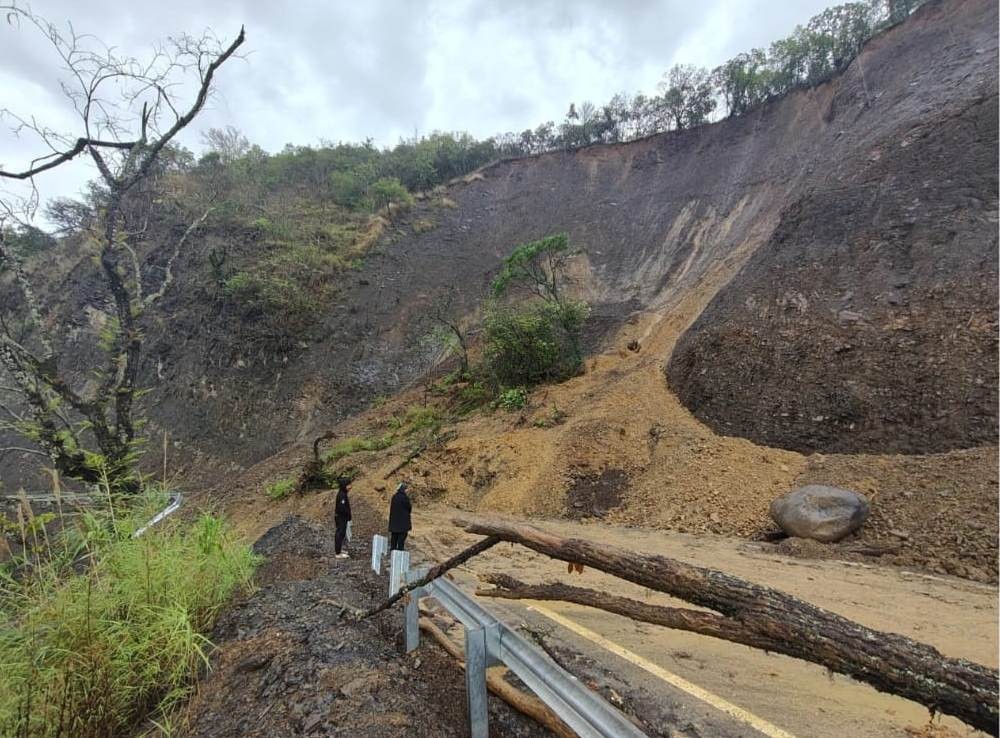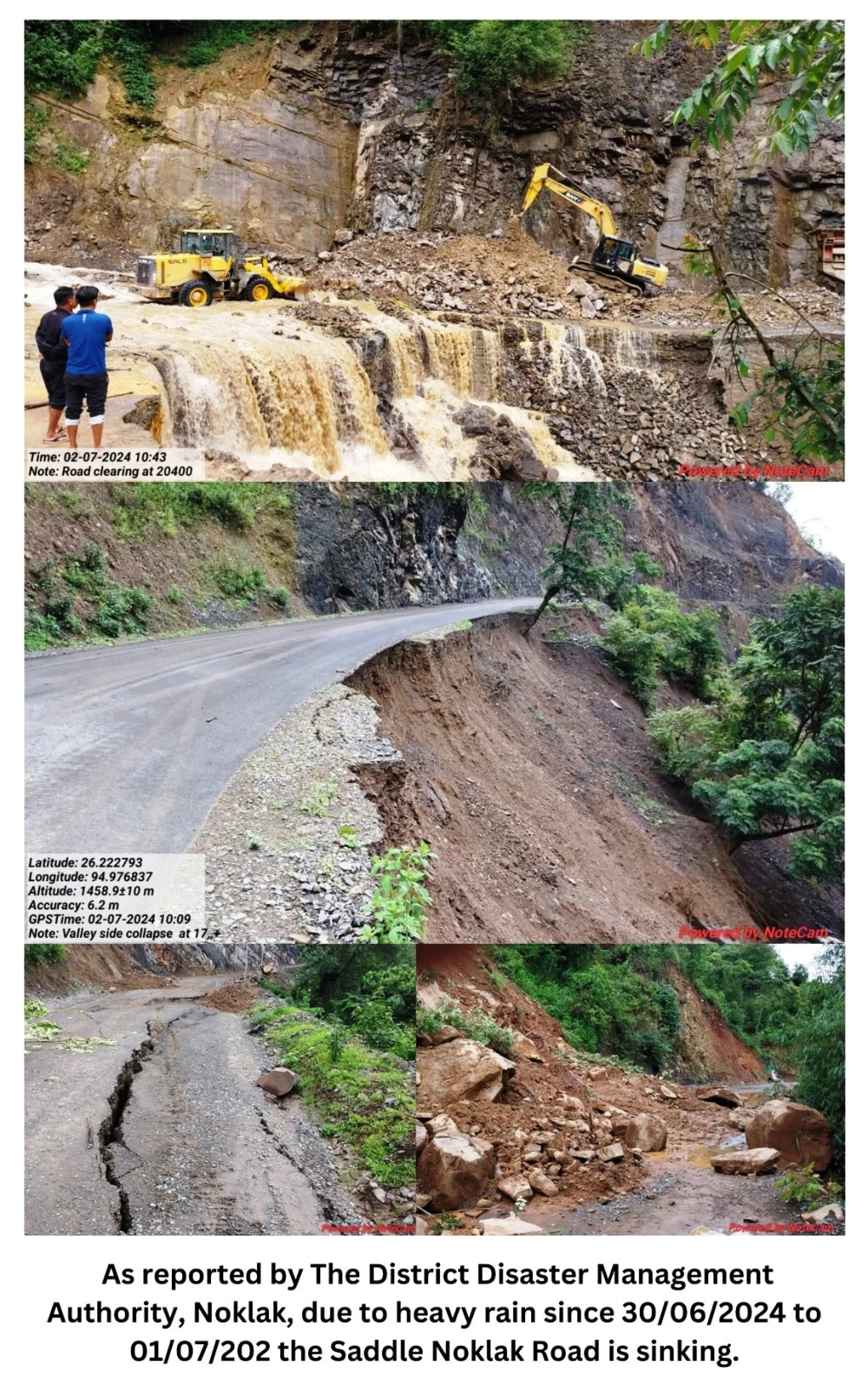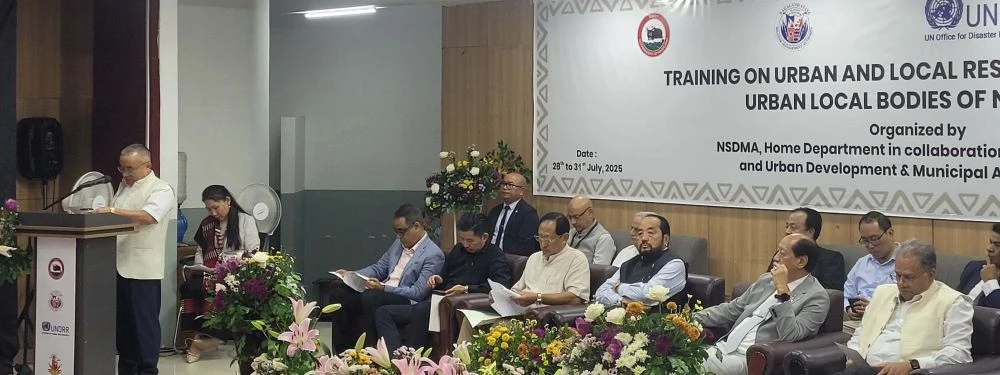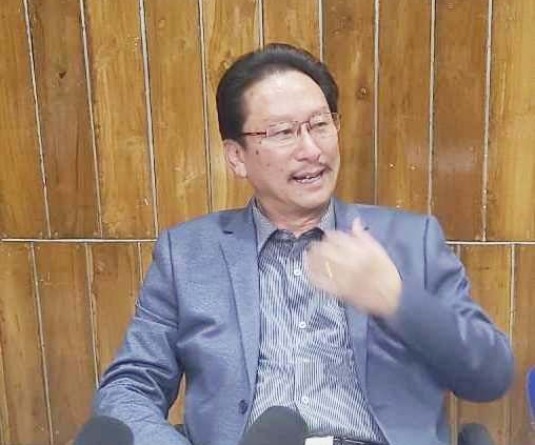Sliding at 53 kms above Kikruma village under Phek district. (Photo Courtesy: NSDMA@X)

Our Correspondent
Kohima | July 29
Nagaland NSDMA & NRE Advisor Z Nyusietho Nyuthe today said that Nagaland is situated in Seismic Zone-V and is highly vulnerable to natural calamities such as earthquakes, landslides, flash flood, hailstorms and forest fires.
“Natural disaster in our state is more or less a continuous phenomenon,” Nyuthe said while addressing training on Urban and Local Resilience for elected Urban Local Bodies members of Nagaland at Capital Convention Centre, Kohima.
He said that Nagaland State Disaster Management Authority (NSDMA), Home Department, in collaboration with the United Nations Office for Disaster Risk Reduction (UNDRR) and the International Institute of Security & Safety Management (IISSM), supported by multiple global partners under the Making Cities Resilient 2030 (MCR2030) initiative, has organise three day “Joint Training on Urban and Local Resilience” from July 29 to 31 in Kohima.
“This high-impact capacity-building programme is designed to strengthen the disaster risk reduction (DRR) capabilities of newly elected Urban Local Bodies (ULBs), including Chairmen and Deputy Chairmen, and equip them with practical tools and global best practices in urban resilience,” he said.
As part of the training rollout, a special Training of Trainers (ToT) session will be conducted on the first day to develop a pool of master trainers who will further disseminate the knowledge within local governance institutions.
The training underscores the crucial role of local governments as being at the “frontline of opportunity” in reducing disaster risks and fostering inclusive and sustainable communities.

With rising challenges posed by climate change, pandemics, and other socio-environmental threats, building resilience requires a concerted effort of the society, Nyuthe said.
The training draws upon global frameworks and tools under the Making Cities Resilient 2030 (MCR2030) Resilience Roadmap, which promotes a three-stage journey of awareness, strategic planning, and implementation.
Key instruments such as the Ten Essentials for Making Cities Resilient and the Disaster Resilience Scorecard for Cities will be utilized to help ULBs identify gaps and advance city-level resilience actions aligned with the Sendai Framework, Sustainable Development Goals (SDGs), and the Paris Agreement.
The objectives of the training is to develop local government trainers by enhancing their knowledge and capacity in sub-national disaster risk reduction and resilience, introduce Practical Tools and Methodologies to support The Ten Essentials for Making Cities Resilient, The Disaster Resilience Scorecard for Cities, Toolkits for DRR strategic planning and prioritization, facilitate sharing of experiences and best practices among local governments and private sector actors on resilience-building.
It also aims to engage the Private Sector, retrospect traditional ways of responding to Natural Calamities.
“This training initiative represents a critical step in institutionalizing resilience across urban governance systems in Nagaland and sets a precedent for other regions to follow,” Nyuthe said.






